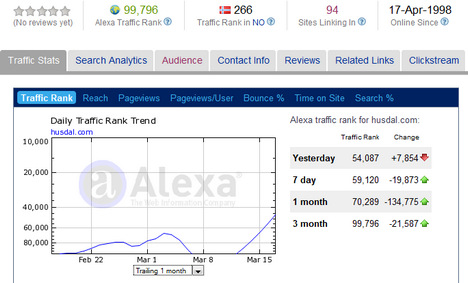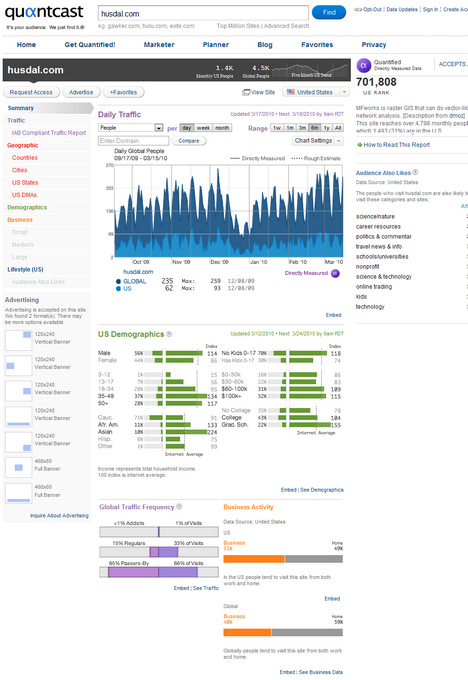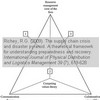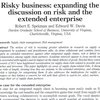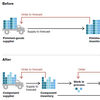 Today I will share some personal thoughts on my blogging: The magic Alexa ranking, supposedly showing a website’s popularity on the Internet, and perhaps an expression of how the supply chain of my blog works. But does Alexa ranking really matter? Is a high Alexa ranking really a quality sign? Some say it does and vehemently defend their point of view. I disagree and this post will tell you why…because Alexa is so easy to manipulate.
Today I will share some personal thoughts on my blogging: The magic Alexa ranking, supposedly showing a website’s popularity on the Internet, and perhaps an expression of how the supply chain of my blog works. But does Alexa ranking really matter? Is a high Alexa ranking really a quality sign? Some say it does and vehemently defend their point of view. I disagree and this post will tell you why…because Alexa is so easy to manipulate.
The buzz about Alexa
Sooner or later every blogger will come across the topic of Alexa ranking and if you’re blogging for money or want to attract advertisers, some of them do pay attention to a blog’s Alexa ranking. Sponsored Reviews does, among others. Most blog evaluation tools use the Alexa ranking one way or the other, like the Websitegrader, although personally I prefer something like Bartlett Interactive’s eValuator, which I find a lot more useful. As to Alexa ranking I’ve been hovering close to 100K for several months, and maybe very soon I will be in the magic top 100K. But should I really care?
Alexa top 100K – how to
Would you not want to have an Alexa ranking like this? Or better, for that matter. Frankly, maybe it doesn’t really matter.
Well, it’s not all gold that glitters. Alexa is seriously flawed and I will show you why: Lets click the Audience tab: A whopping 87% of my Alexa traffic from Norway. That’s gotta be wrong… or?
It is wrong. It is only me. How?
In the course of my day I use 3-4 different PCs, all happen to have the Alexa toolbar installed, and I visit my site many times every day from each of them, to update my blog, to read and answer comments, to write new posts and find old posts I can link back to, or to re-read and re-edit older posts.
So basically, what counts, is a couple of Alexa users visiting your blog regularly. That’s all it takes. Alexa says so, too:
Alexa’s traffic rankings are based on the usage patterns of Alexa Toolbar users and data collected from other, diverse sources over a rolling 3 month period.
I’m not sure what the “diverse sources” are, but it can’t be worth noting, not really.
The ugly truth
In my “real stats” my own visits are excluded, and this is how my last 90 days look like:
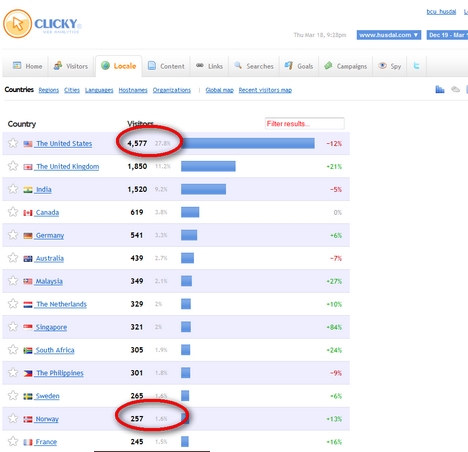
A mere 1% of my traffic comes from Norway, while the US accounts for 27%. Nothing of this is reflected in my Alexa stats.
Can Alexa be trusted?
In my opinion, no. That said, Alexa does have a disclaimer, stating that
Sites with relatively low traffic will not be accurately ranked by Alexa. Alexa’s data comes from a large sample of several million Alexa Toolbar users and other traffic data sources; however, the size of the Web and concentration of users on the most popular sites make it difficult to accurately determine the ranking of sites with fewer than 1,000 monthly visitors. Generally, traffic rankings of 100,000 and above should be regarded as not reliable.
My monthly visitors are close to 7000, so that should be OK, but I’m so close to 100K that my ranking should be reliable, shouldn’t it? I don’t know. I’ve lost my faith in Alexa, now I know how easy it can be manipulated. Besides, I doubt that many of my readers are likely to use Alexa anyway, so as a metric for blog it is really worthless.
A better tool: Quantcast
If you’re serious about blogging, and want to attract serious and professional advertisers, I recommend using Quantcast. Both the stats and the demographics are way better than what you get at Alexa. And Quantcast counts ALL visitors, unlike Alexa.
I’m using both my GetClicky widgets and some Quantcast widgets on my Audience and Traffic page for everyone to see. I will not distort my traffic stats (because that is what Alexa does) to those who wish to advertise on husdal.com. That is why I have put advertising rates on my blog, and refer my potential advertisers to my true audience and traffic information, not some Alexa ranking that is not working well for my blog. My blog is my supply chain and I care about my supply chain. It’s all about supply chain visibility.

